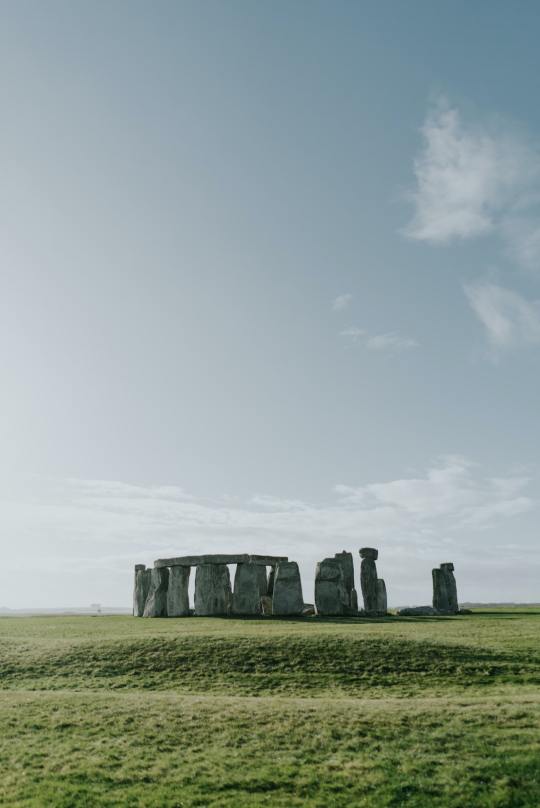#celtic england
Text
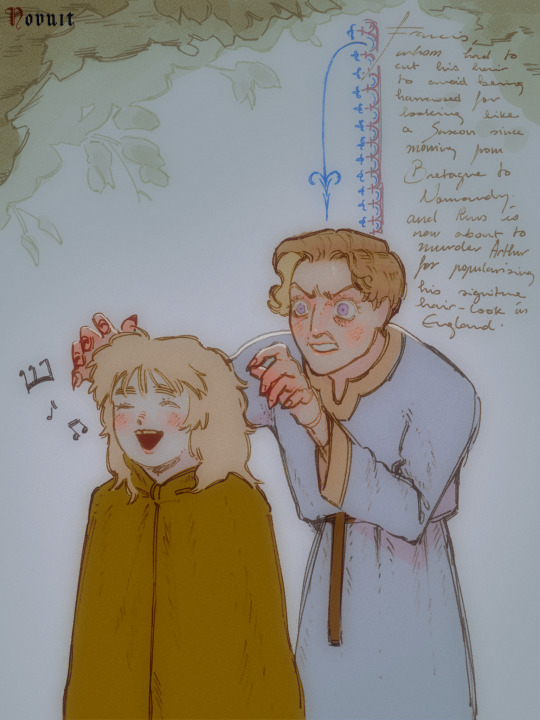
The (late) early medieval period was definitely one of the very rare times Francis had both short hair and no facial hair at the same time. This was also a rare time where Arthur had the privilege to rock the long hairstyle but unfortunately for Arthur, he also had to watch out for Frantic Francis, the hair-snatcher.
#historical hetalia#hetalia#hws england#hws france#aph england#aph france#hetalia england#hetalia france#arthur kirkland#francis bonnefoy#my art#I'm starting to recognize the theme of me headcanonning countries to have celtic backgrounds
345 notes
·
View notes
Text


Bluebell Woodland
April 2023
#own photo#scrapbookphoto#emeraldscrapbook#forest#lensblr#original photographers#woods#green#forest aesthetic#forestcore#bluebells#bluebell wood#trees#nature#spring#england#english woodland#cottagecore#aesthetic#blue#celtic#wilderness#woodlands#woodland#tree#nature photography
179 notes
·
View notes
Text

The ICONIC moment Merlin and Arthur meet. I’m still in complete shock that I went there and walked on the same concrete that the whole cast and crew walked on. Such an adventure, one I am so grateful for. The meaning behind my @ name is back in 2012 for some reason some of us were calling ourselves ‘Merlanians’ - am I the only one who remembers this?! Also taking these photos was so fun and I highly recommend it if you get the chance to go 🥰
#merlin#merlin bbc#merlin fandom#merlin and arthur#emrys#Colin Morgan#Bradley James#Angel coulby#katie mcgrath#chateaudepierrefonds#France#England#Celtic#myth#legend#arthurian#arthurian legend#sorcery#magic#magician#bbc#fangirl#fandom#pendragon#arthur pendragon#King Arthur#morgana#morgana pendragon
338 notes
·
View notes
Text
"Two so-called “Celtic rainforests” in the UK are to be restored with a mixture of native planting and natural reforestation.
The hope is that they will provide rich habitats for dozens of species, improve groundwater quality and flood prevention, and allow residents and tourists to experience an exceptionally rare forest biome called temperate rainforest.
The most famous and largest temperate rainforests on Earth are found in the US states of Oregon and Washington, along Brazil’s Atlantic coast (known as the Atlantic Forest), and on New Zealand.
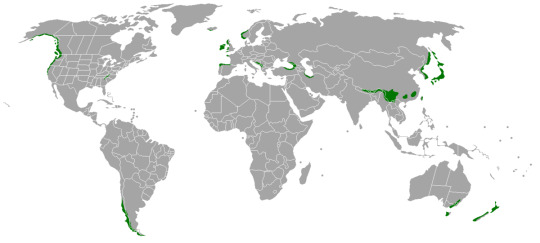
Pictured: Map of the global distribution of temperate rainforests. Source: Wikipedia
Britain, especially Wales, would have featured a certain amount of these Celtic rainforests in areas that experience high moisture content coming off the ocean, and low variations in annual temperatures.
One such place is Creg y Cowin on the Isle of Man, where 28 hectares (70 acres) of native Celtic rainforest will be planted by hand, and another 8 hectares (20 acres) left to regenerate naturally.
The Manx Wildlife Trust will be responsible for the project, and it anticipates “the return of oakwood dwellers such as wood warbler, pied flycatcher, and redstart, as well as raptors, owls, and woodland invertebrates.”
Historic agricultural dwellings called “tholtans” will be left on the landscape for their historical and cultural significance.
Elsewhere, in Gwynedd, North Wales, another 40 hectares (112 acres) of Celtic rainforest will be raised via a mixture of native planting and regeneration. The selected site is the peak and slopes of Bwlch Mawr, near the university town of Byrn Mawr.
“There’s real momentum now to restore and expand our amazing temperate rainforests, and it’s brilliant to see the Wildlife Trusts advancing their plans,” Guy Shrubsole, environmental campaigner and author of The Lost Rainforests of Britain, told the Guardian in the wake of the announcements."
-via Good News Network, 4/7/23
#uk#united kindgom#england#wales#gwynedd#rainforest#forest#temperate rainforest#rewilding#celtic#ecosystem#good news#hope
570 notes
·
View notes
Text
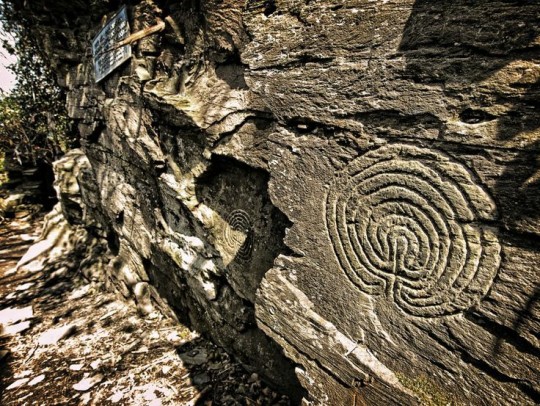

Labyrinth Rock Carving - Tintagel - Cornwall
#labyrinth#carving#stone carving#druidry#druidic#paganism#tintagel#cornwall#england#arthurian site#celtic place
3K notes
·
View notes
Text
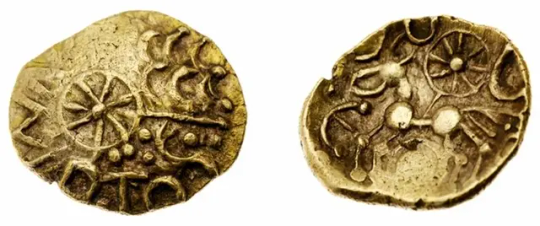
Gold Coin Reveals Unknown British King
New light has been shed on a little-known part of British history thanks to the extraordinary discovery of a coin bearing the name of a forgotten Iron Age ruler in Hampshire, south-east England.
The coin, which has the inscription “Esunertos,” was discovered by a metal detectorist in a field in Hampshire. Esunertos may have ruled as a king from the powerful Danebury Fort, according to experts’ speculation, and this find has been hailed as “one of the outstanding discoveries of recent decades.”
Leading Iron Age experts have studied the coin and deduced it to be struck by a pre-eminent male figure dubbed ‘IISVNIRTOS’ whose name translates as ‘Mighty as the God Esos’.
The coin was struck sometime between 50 and 30 BC, shortly after Julius Caesar’s first Roman raid of Britain in 55 BC.
The coin, which is thought to have been produced between 50 and 30 BC, was struck in conjunction with Julius Caesar’s first Roman raid on Britain in 55 BC when the Roman general and his 20,000 soldiers landed on the Kent coast. Despite a confrontation with Celtic warriors on the beach, the Romans encountered difficulties landing due to rough seas and eventually had to return home.
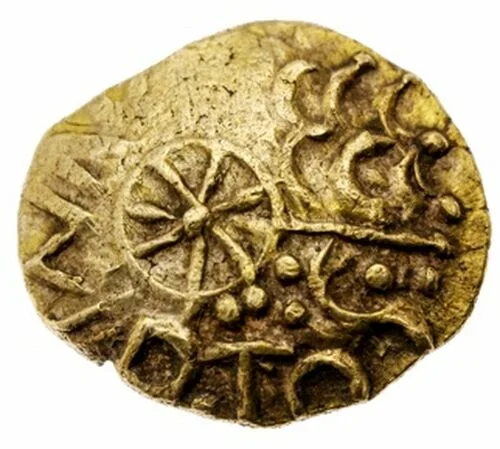
Gregory Edmund, Iron Age Coin Specialist at Spink Auctioneers said: “This fabulous piece of prehistoric artwork completes the mental image we have when we think of Iron Age Britain – the war horse and chariot.
“But it also surprises us with the appearance of classical languages like Latin.
Dr John Sills of the Celtic Coin Index at the Ashmolean Museum said: ‘It is one of the outstanding discoveries of recent decades in Celtic numismatics.’
Initially, it was anticipated that the gold coin would sell for around £4,000 ($5000) at auction. But contrary to all expectations, it broke a record at Spinks Auction by selling for an astounding £20,400 ($25,500).
The coin was found by Lewis Fudge, a metal detectorist who received permission to search a farmer’s field in March this year. Lewis Fudge expressed his elation, stating:
“I am over the moon. If it were not for people in the auction room, I would have jumped around. The collectors I spoke to are gobsmacked. I’m so glad I did not take them up on their private offers before the auction. To think my find has generated its own Wikipedia page is incredible.”
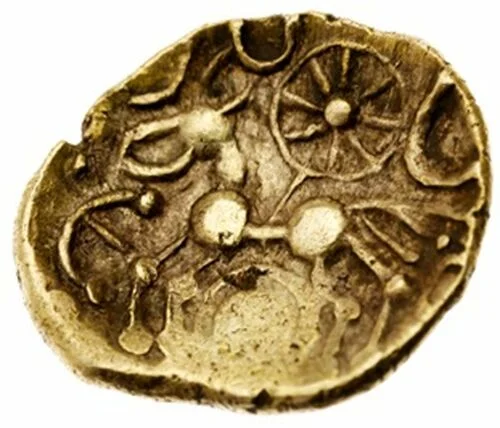
Spink Auctions describe the coin as a quarter slater with the obverse side of the coin bearing the name Esunertos in Latin, and with the worn head of Apollo formed of three interlocking rows of outward facing crescents, a seven-spoked wheel at center in lieu of the ear, and an eye of visage with radiating spike towards the neckline.
The reverse of the coin has a tripled-tailed horse, with a pincer-like mandible for face and linear ear, with pelleted mane, yoke or bucranium above the head, an 8-spoked wheel above spearing into the horse’s back, and double or triple ringed annulet below.
By Leman Altuntaş.

#Gold Coin Reveals Unknown British King#Hampshire England#Danebury Fort#Esunertos#gold#gold coin#ancient gold coin#ancient artifacts#archeology#archeolgst#metal detecting#history#history news#ancient history#ancient culture#ancient civilizations#iron age#celtic history
41 notes
·
View notes
Text
Arthur and anglo saxon poetry fucks me up. We call it the Dark Ages because of a dearth of sources, but we have a melancholy poem describing the ruins of Aqua Sulis, or Bath, in the centuries after the Roman Collapse. I might make this into a fic someday, but Arthur is only a boy half-grown and roaming through the anglo-saxon heptarchy, a world he still can't quite wrap his head around, Cumbrian, a Celtic language, still first to cross his lips as he stares up at a ruined city. But more and more of what will one day be English rolling around in his mind, two languages with so few loan words there is nothing in English we can use to construct his mother tongue. Walking through a city, what was once a real and robust city and now lays dead and decaying, he wonders.
Who's bones are these broken beams? His own? Were he and Alasdair and Rhys something once called Britannia, now faded? Are they Rome's, who died thousands of miles away in a place Arthur hasn't seen for centuries? His mother's? She ruled and represented nebulous things, these borders shifting and flexing. Rome made a desert and called it peace, but she ruled it anyway, lady of the waters and the north. Maybe. He's unsure. He touches fallen tile and broken stone and knows what he knew when she drew her last. The end of a world that began failing long before. He'll never be able to sort the losses out; the words he may have once used to describe them are dead and gone by the time there are experts enough to study it. All that once made sense has been forgotten under the weight of a thousand years.
This masonry is wondrous; fates broke it
courtyard pavements were smashed; the work of giants is decaying.
Roofs are fallen, ruinous towers,
the frosty gate with frost on cement is ravaged,
chipped roofs are torn, fallen,
undermined by old age. The grasp of the earth possesses
the mighty builders, perished and fallen,
the hard grasp of earth, until a hundred generations
of people have departed. Often this wall,
lichen-grey and stained with red, experienced one reign after another,
remained standing under storms; the high wide gate has collapsed.
and
Far and wide the slain perished, days of pestilence came,
death took all the brave men away
their places of war became deserted places,
the city decayed. The rebuilders perished,
the armies to earth. And so these buildings grow desolate,
and this red-curved roof parts from its tiles
of the ceiling-vault. The ruin has fallen to the ground
broken into mounds, where at one time many a warrior,
joyous and ornamented with gold-bright splendour,
proud and flushed with wine shone in war-trappings;
looked at treasure, at silver, at precious stones,
at wealth, at prosperity, at jewellery,
at this bright castle of a broad kingdom.
#Britannia and her children || they made a desert and called it peace#hws england#Arthur || stone set in the silver sea#Eirian || into the nightlands#my writing || cacoethes scribendi#I can kind of read old english and it always fucks me up how theres hardly a celtic root word anywhere that's not a place name#im not depressed im analysing texts!!
41 notes
·
View notes
Photo

#own photo#mushroom#toadstool#fungi#autumn#first mushies of the season#on day one of#september#too#woods#forest#tree#leaves#hillfort#celtic#nature#gloucestershire#england#walks#adventures#exploring#lensblr#original photographers#photographers on tumblr
336 notes
·
View notes
Text
Happy Coronation Day!
#coronation#british royal family#scotland#england#coronation day#King Charles#soccer#football#celtic fc
96 notes
·
View notes
Text
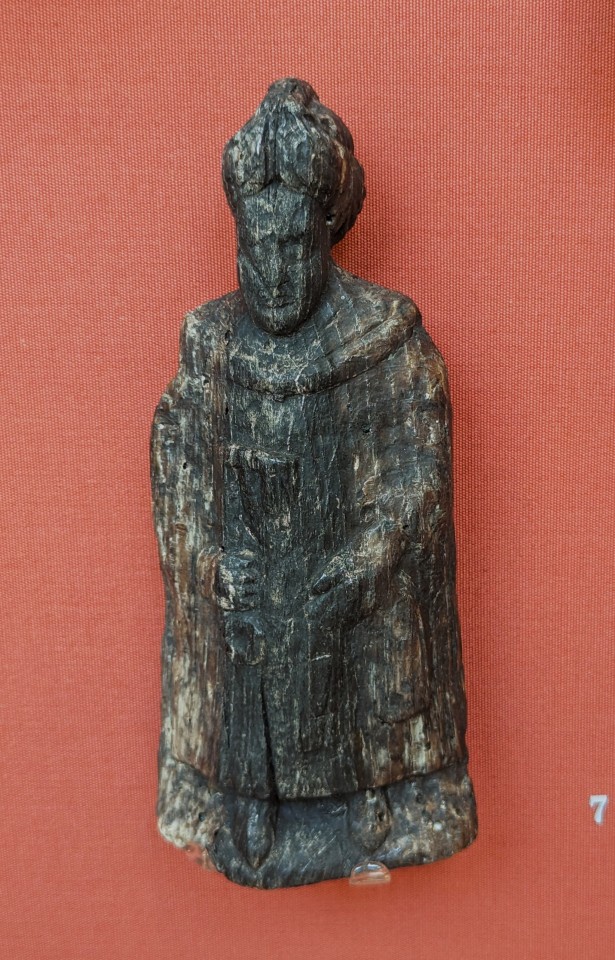
Oak Statuette of the Goddess Epona from Winchester, England dated to the 1st Century CE on display at the Winchester City Museum in Winchester, England
This small statue is thought to be the Gallo-Roman goddess Epona who was a protector of horses and goddess of fertility. While Epona's origins are from Celtic peoples the goddess proved to be very popular amongst the cavalry regiments in the Roman army. She was the sole Celtic diety worshipped in the city of Rome due to this.
Photographs taken by myself 2023
#art#archaeology#history#celts#celtic#england#english#ancient#roman empire#winchester city museum#winchester#barbucomedie
13 notes
·
View notes
Text
the terror has me itching to fall into another rabbit hole about victorian racism because they absolutely nail the despair james would feel at "not being even English" but I need the details of what the Victorians were thinking about the Brazilians specifically.
It's already pretty wild that James ends up embodying the English fear of miscegenation of all things, which right now I can't remember if it's openly addressed when it comes to Francis and Sophia or it's only implied (I am aware about the essays on how the Irish are an inferior race of "white gorillas", I don't believe for a second Sir John wasn't) but the ties to a different colonial empire...they had a caste system too, to add to the mindfuckery.
#like james' mother could have not even been white. that's the level we are at. he doesn't know either.#the terror#antiqua ponders how the terror masterfully uses gothic tropes which were appropriate for the time#european racism is so fascinating to me and victorian racism in particularly because it tends to be my field of study#and also because you read things like wilkie collins being accused of corrupting the public by being a francophile#i found an essay about anti german sentiment propagated by the stereotype of germans loving sausages too much#like sometimes it's fucked up shit like matthew arnold pontificating on the inherent inferiority of the celtic race and how england needs#to conquer them for their own good#and some other time it's room with a view where they go to italy and faint when they see italians#where is that post about lovecraft's nightmares being to be in an elevator with an irishman
16 notes
·
View notes
Text
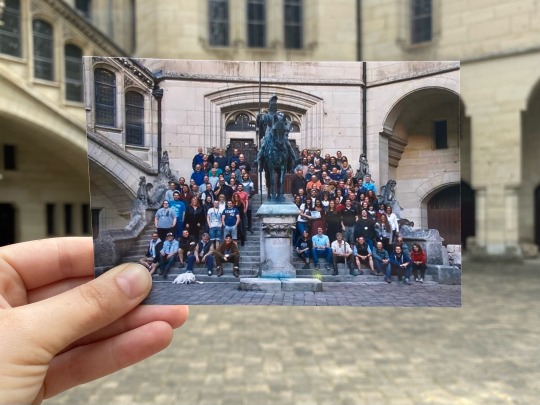
Photo of the cast.. what an amazing bunch of people that gave us a show that is so important to so many of us 👏🏻🥰
#angel coulby#bradley james#king arthur#legend#merlin#merlin bbc#merlin fandom#arthur pendragon#arthurian#celtic#Colin Morgan#katie mcgrath#pendragon#sword in the stone#excalibur#magic#sorcery#morgana#England#France#myth#arthurian legend#bbc#fandom#fangirl#merlanian#merlinfan
76 notes
·
View notes
Text
I'm gonna be in Leiden for their Summer School in Linguistics this year!
Going to finally get some formal linguistic education, something I'm sorely missing right now
#unfortunately actually getting a masters is difficult because i dont have a suitable batchelors#and england seems not to really care about historical linguistics at all really#and wales scotland and northern ireland only really do for specifically celtic stuff#plus money is a thing#but yeah should be fun#and its exciting to go back to education for the first time in 7 years#also scary seeing as last time i was in education i had the worst mental health of my life
7 notes
·
View notes
Text




Appreciation post for Jake DeBrusk
#jake debrusk#ice hockey#boston bruins#new england#nhl#appreciation post#nhl bruins#hockey#puck#goal#td garden#stick#ice#74#celtics#red sox#patriots#sports#gym#black and gold#yellow#ccm#national hockey league
13 notes
·
View notes
Photo
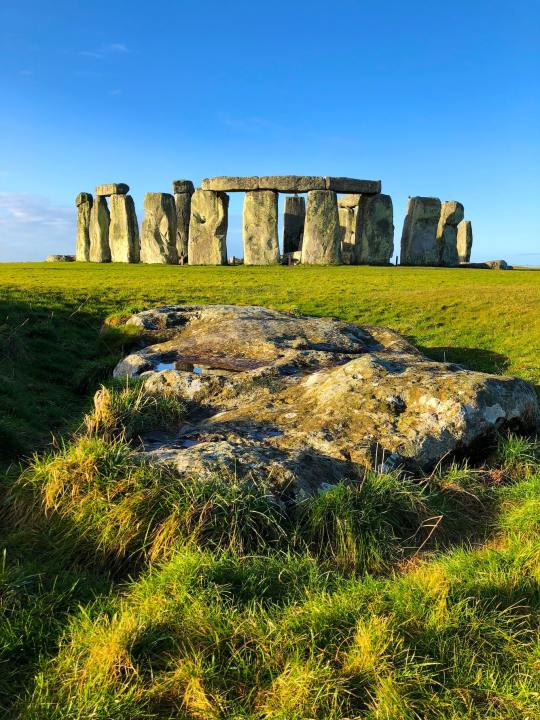
40 notes
·
View notes
